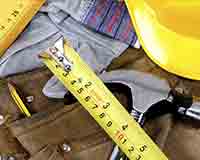James Driscoll discusses a the extent of a landlord’s repairing covenant when a tenant suffers injuries at the property
Key points
• Landlords are liable to repair when letting
• Failure to have a bannister on stairs is not a repair
• The landlord was not liable when an occupier slipped on the stairs
A landlord’s responsibilities for repair and maintenance when letting residential dwellings are relatively easy to state: the landlord is responsible for repair of the dwelling and for such installations as running water, electricity and sanitation. This repairing covenant is implied into tenancies by section 11 of the Landlord and Tenant Act 1985. In some cases it is an express term of a written agreement.
As the liability is contractual, if someone other than the tenant suffers injuries or losses, they must sue in tort under the Defective Premises Act 1972 (“the 1972 Act”).
More generally, landlords letting defective or substandard properties may face action from their local housing authority under the Housing Act 2004.
Ms Sternbaum’s claim
The interrelationship between these obligations is illustrated by Sternbaum v Dhesi [2016] EWCA Civ 155; [2016] PLSCS 91. The case concerns a letting of a house to a company in which the claimant, Ms Sternbaum, and her partner had an interest. She was using a rear staircase when she slipped, fell and suffered injuries. It was common ground that the staircase was steep and that it was not fitted with either a handrail or a bannister. There was evidence that there was once a handrail, which may have been removed but it had not been replaced.
Wishing to recover damages, Ms Sternbaum sued the owner, Mr Dhesi, alleging negligence and breach of statutory duty. By the time of the hearing the issue had been narrowed to a claim under the 1972 Act. The claimant argued that without a handrail the stairs were dangerous and if there had been a handrail the accident would not have happened. As the handrail was part of the staircase, it was part of the building and the landlord should have repaired it. Removing the bannister made the staircase unsafe and its absence was a relevant defect which was the responsibility of the landlord under the tenancy agreement and under section 4 of the 1972 Act.
Claim dismissed
The recorder decided against Ms Sternbaum applying the Court of Appeal decision in Alker v Collingwood Housing Association [2007] EWCA Civ 343. He accepted that the accident would not have happened if there had been a handrail but, applying Alker, said that there was no general duty on a landlord to make premises safe for the tenant, let alone to reinstate features that may have existed in the past. Although the recorder did not need to make a finding, he indicated that the lack of a handrail counted as a defect.
Appeal
Ms Sternbaum appealed against the dismissal of her claim. It was contended that the failure to replace the bannister was a “relevant defect” under section 4(4) of the 1972 Act. That statutory provision extends the landlord’s responsibilities to cases where the landlord has access to the premises to carry out repairs (a right conferred by the tenancy agreement in this case).
The landlord’s lawyer argued that the bannister did not form part of the structure of the premises and that the recorder was bound to follow Alker. In that case the landlord was held not liable to a damages claim when a tenant put her hand to the glass panel of the front door and pushed it open, but the glass broke and her arm went through the pane. The door was not fitted with safety glass, but its fittings complied with the building regulations which were applicable when the property was built. It was decided that placing an obligation on the landlord to re-glaze with safety glass would have amounted to an improvement, not a repair.
Dismissing Ms Sternbaum’s appeal, the Court of Appeal accepted that the narrowness of the tread, the steepness of the flight of stairs, and the lack of a handrail all made the staircase hazardous. But unsafe as it may have been, it could not be described as being in “disrepair”. The surrounding walls and the stairs were apparently sound and there was nothing wrong with the floor covering.
Moreover, there was no bannister at the start of the tenancy. A conclusion that the landlord should have fitted one would amount to requiring an improvement, or making the premises safe. Either conclusion would go beyond the landlord’s repairing covenant.
As the court decided that there was no breach of the landlord’s obligations, it did not have to decide if the missing bannister formed part of the structure of the dwelling. Nor did it have to decide if Ms Sternbaum could frame her claim under section 4(4) of the 1972 Act. Nevertheless, the court offered brief “observations” on these issues. First, it doubted if a bannister could ever form part of the structure of the rear staircase and, in any event, there was no bannister at the inception of the tenancy. Second, the court’s post-hearing research did not allow it to reach a definitive answer on the section 4(4) point.
So, Ms Sternbaum was not entitled to damages for her injuries. The decision (which is just seven pages long) is light on some of the detail. We are told, for example, that an improvement notice was served on the landlord requiring him to install a handrail, but we do not know the outcome of that procedure.
Ms Sternbaum might be forgiven for wondering how she failed to recover compensation for a condition that amounted to a “category 1 hazard” under the Housing Act 2004, but that condition was not within the landlord’s repairing covenant.
James Driscoll is a solicitor and an author. He is the consulting editor to the Handbook of Residential Tenancies.







